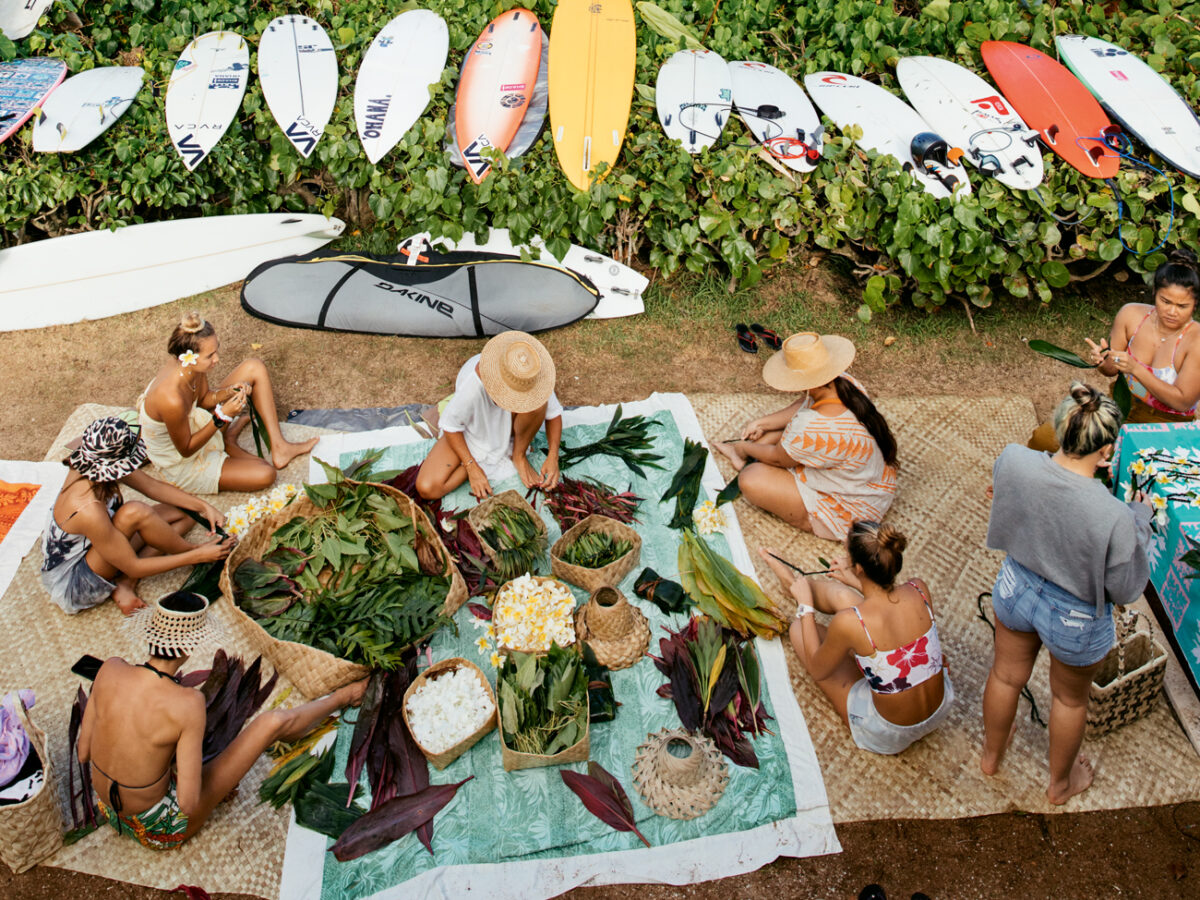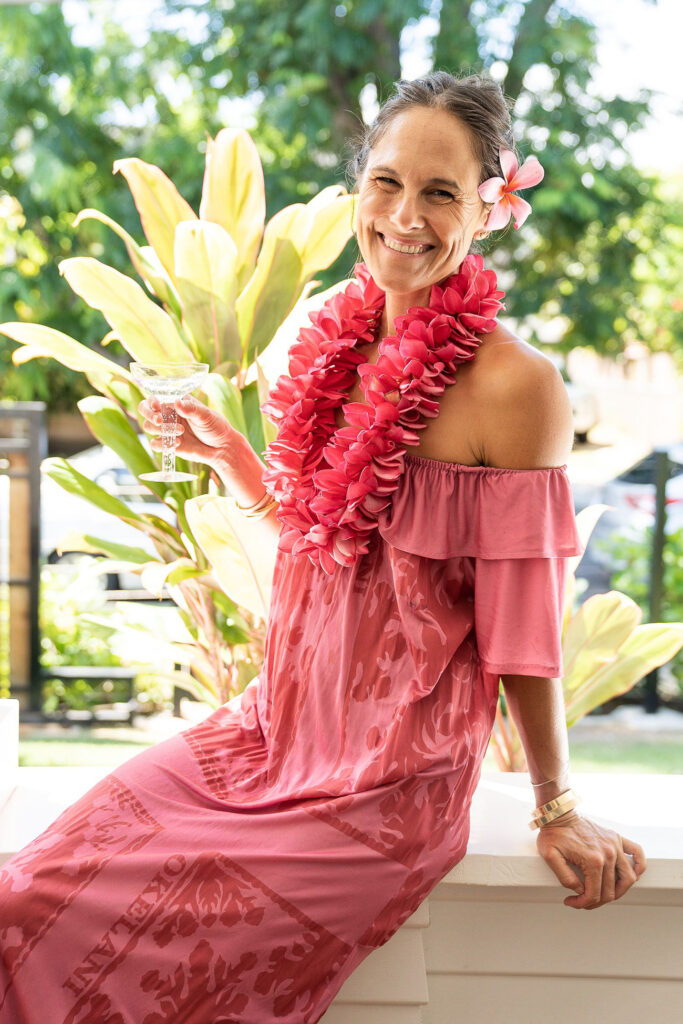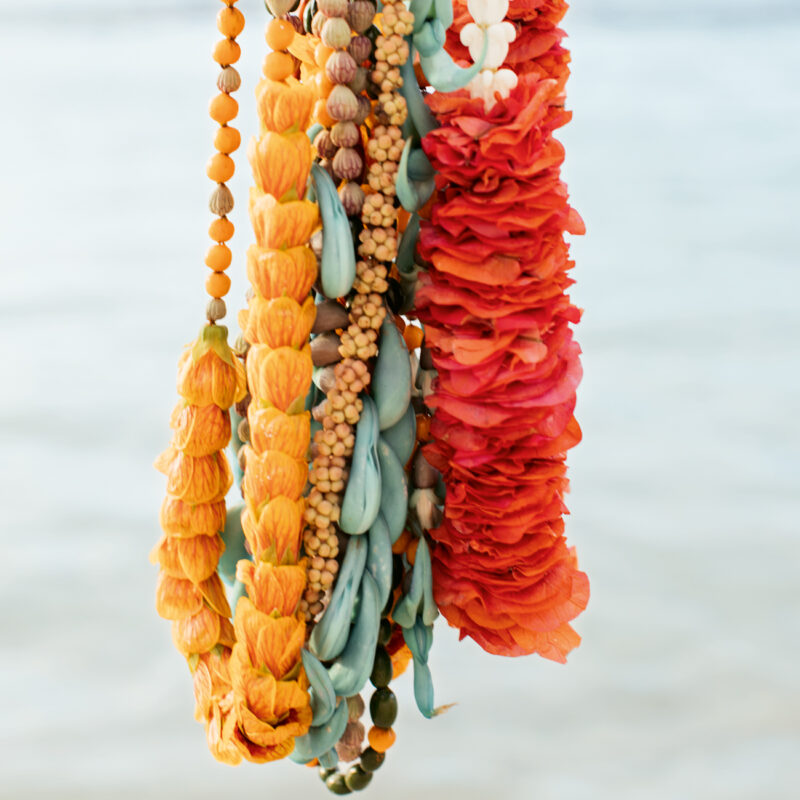You’ve Never Seen Hawaiian Leis as Stunning as These
Lei maker Meleana Estes is one of the foremost teachers of the Hawai‘ian craft. In this excerpt from her new book, Lei Aloha, she encourages budding lei artists to make the most of the beauty around them.

Lei Aloha Copyright © 2023 by Meleana Estes with Jennifer Fiedler. Photographs copyright © 2023 by Tara Rock. Published by Clarkson Potter, an imprint of Random House.
Growing up in Hawai‘i, Meleana Estes was immersed in the traditions of lei making, thanks to her tūtū, or grandmother, a seamstress and costume designer who took up lei making in the 1960s, when traditional Hawai‘ian skills were re-emerging throughout the islands. Her tutu became an expert over the years and passed this knowledge to her family and to Meleana, who, after a career in fashion, went on to become an expert lei maker and teacher of the craft, running workshops first in Honolulu and eventually abroad.

Lei Aloha Copyright © 2023 by Meleana Estes with Jennifer Fiedler. Photographs copyright © 2023 by Tara Rock. Published by Clarkson Potter, an imprint of Random House.
Brought to the Hawai‘ian Islands by Polynesians hundreds of years ago, leis have their own sets of legends, cultural meanings, and ritual significance, and were made with seeds, shells, feathers, leaves, and flowers of near infinite variety and combinations, though what most tourists encounter these days are leis made with imported orchids. Estes’s new book, Lei Aloha: Celebrating the Vibrant Flowers and Lei of Hawai’i, is a stunningly beautiful collection of stories, photographs, and how-tos centering on this rich and varied tradition that few visitors ever get to see in its vivid and diverse glory.
In this excerpt, Estes writes about how leis transcend place and can be made wherever you are. As she writes in the introduction: “The flowers that make up each lei are less important than the aloha (love) that goes into its sharing.”

Lei Aloha Copyright © 2023 by Meleana Estes with Jennifer Fiedler. Photographs copyright © 2023 by Tara Rock. Published by Clarkson Potter, an imprint of Random House.
When I left Hawai’i to attend college on the mainland, a lei sent from home was everything to me when I was homesick. For my birthday, my tūtū would make lei po‘o from materials in her Mānoa yard—one for me and one for my roommate—take them for inspection at the airport agricultural station (necessary if you want to ship plant material out of Hawai‘i), and send them in the mail. When I opened the carefully packed box of lei placed between layers of tī to keep them cool and fresh, it was like being transported back home. I felt her love as clearly as if I was standing on the cool cement floor of her basement garage as she tied lei po‘o on my head before school on a birthday morning.
But one beautiful thing about lei making is that flowers are everywhere. Once you are a lei maker, you see the first spring blossoms on your college quad, mountain ferns on a hike in the Sierras, or the flower markets in New York City in a different way—full of lei possibilities.
Using what is in abundance around you—wherever you are in the world—is an important lei-making skill. I always travel with raffia and a lei needle in case I feel called to make a lei with whatever beautiful material I might come across. I’ve made lei from bright pink bougainvillea in India, hydrangeas in the Hamptons, and Aspen leaves in Colorado, which reminded me of broad lapalapa leaves at home.

Lei Aloha Copyright © 2023 by Meleana Estes with Jennifer Fiedler. Photographs copyright © 2023 by Tara Rock. Published by Clarkson Potter, an imprint of Random House.
Entertainer and kumu hulu Robert Cazimero remembers traveling on the mainland for shows with his lead dancer, fellow kumu, and dear friend, Leina‘ala Kalama Heine. They would pull over on the side of the road in San Francisco or Seattle to gather blue and purple hydrangea for wili [a specific kind of lei made with wound twine]. “She would be the one saying, ‘Stop the car,’” he says, smiling about how they couldn’t pass up the opportunity to use one of his favorite flowers for making wili lei.
“I don’t have the luxury as much as you do in Hawai‘i, but there are wonderful things that we get here that I know,” says Los Angeles–based lei maker Leilani Huggins, who makes lei under the name Leis by Leilani. Born in Los Angeles, her family lived on Maui for a brief part of her childhood, and at the age of six she returned to live in Los Angeles. But her Native Hawai‘ian side of the family made sure she learned the craft of lei on regular visits to the islands. Now she runs a successful lei-to-order business in southern California using materials bought at markets, like gardenia, anthurium, and orchids, as well as plants sourced from her neighborhood. “My whole block and my whole neighborhood have the Metrosideros, the ōhi‘a, [which] is blooming like crazy right now. All the lei that I’ve been making the last couple days are all ōhi‘a lehua,” she says, when I called her in May. “We don’t get the [same kahili liko] leaves, but the bloom is the exact same. The buds are the exact same.”
Get the Book

Lei Aloha Copyright © 2023 by Meleana Estes with Jennifer Fiedler. Photographs copyright © 2023 by Tara Rock. Published by Clarkson Potter, an imprint of Random House.
For more inspiring stories and stunning photographs of leis, purchase a copy of Lei Aloha: Celebrating the Vibrant Flowers and Lei of Hawai’i, by Meleana Estes.